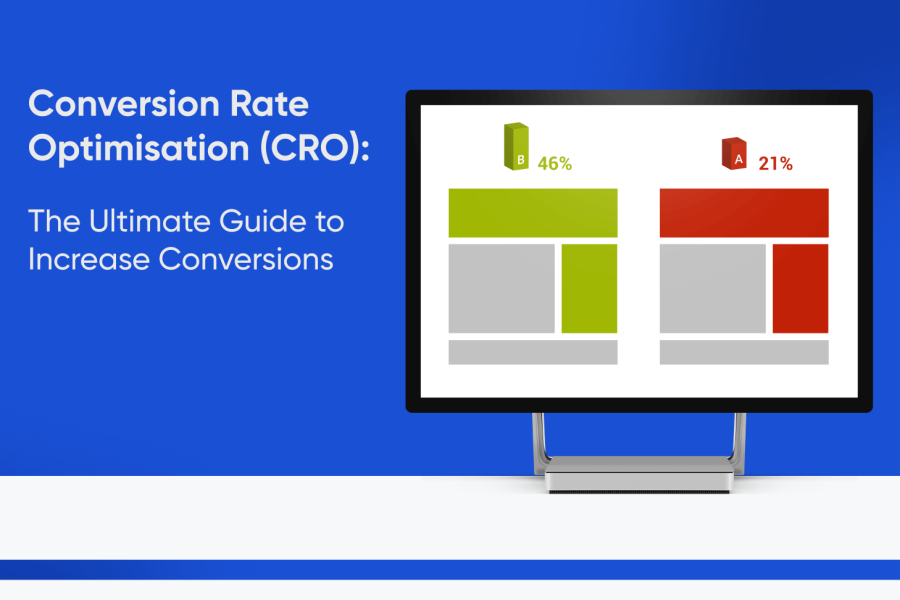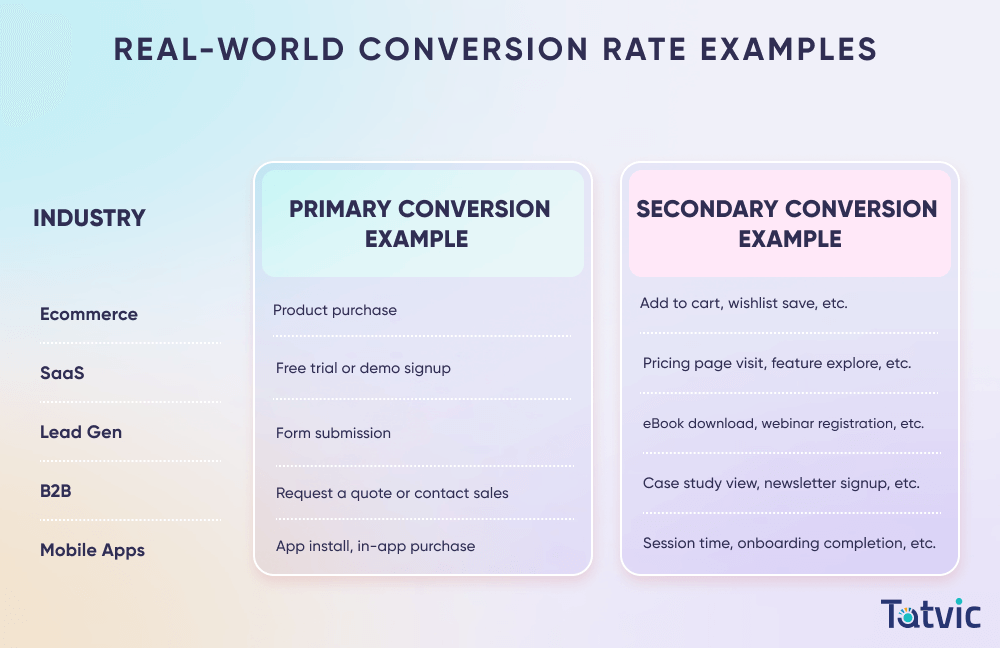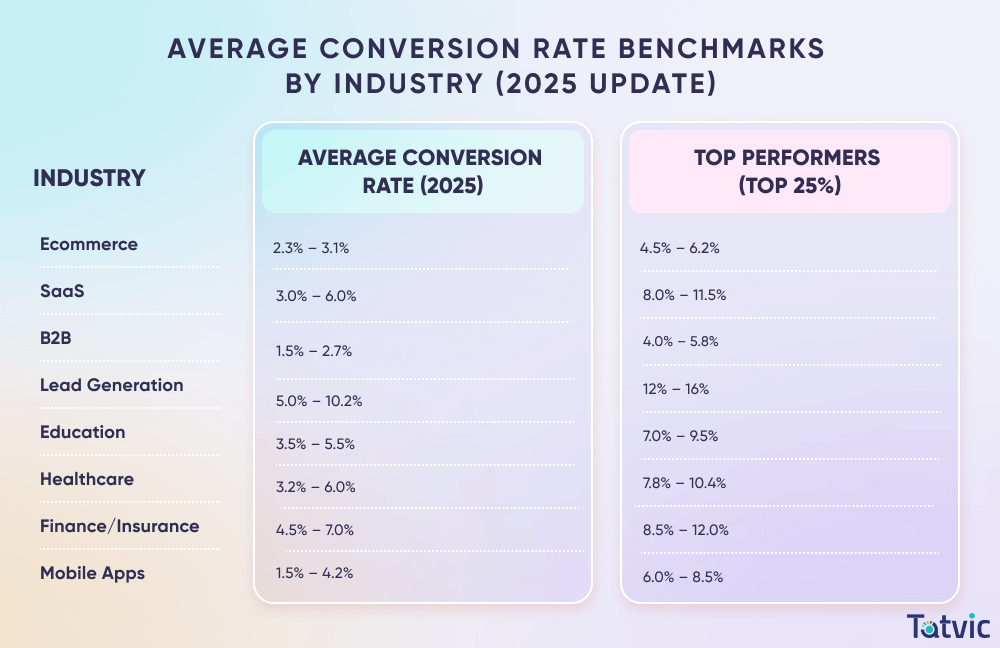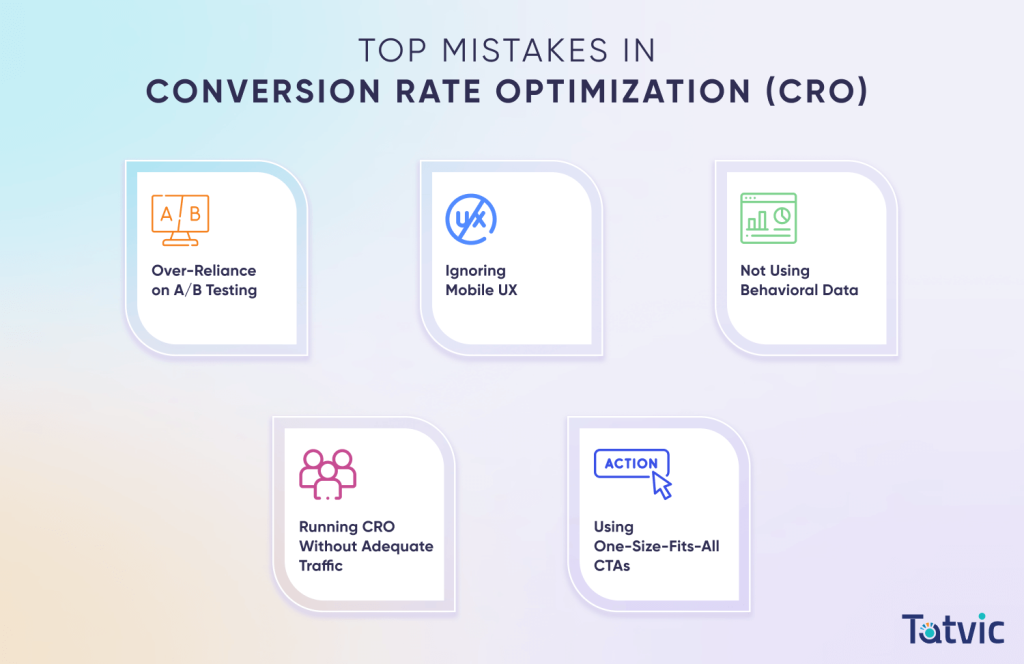In today’s digital-first world, simply driving traffic to your website isn’t enough. Conversion Rate Optimisation (CRO) is the science and art of turning that traffic into actual results, whether that’s a purchase, a sign-up, a lead, or any other measurable business goal.
Put simply, CRO is the process of improving your website or digital experience to increase the percentage of users who take a desired action. It goes beyond flashy design and A/B testing. It’s about understanding user behavior, eliminating friction, and delivering a seamless, persuasive journey that encourages conversion.
Why Conversion Rate Optimisation (CRO) Matters More Than Ever in 2025?
In 2025, CRO isn’t just a “nice-to-have”, it’s a mission-critical function for any digital business.
Here’s why:
- Rising Acquisition Costs (CAC): Paid media is becoming more expensive across all platforms. Brands are spending more than ever to bring users in making it vital to maximize ROI from every visitor.
- AI-Driven Personalization: With the rise of Agentic AI, machine learning, and real-time data, users now expect hyper-personalized experiences. CRO has evolved to incorporate AI-powered journey optimization that dynamically adjusts to user intent.
- Shorter Attention Spans: Users bounce faster and decide quicker. Your website has mere seconds to impress, convince, and convert.
- Privacy-First Digital Landscape: With third-party cookies on their way out, first-party behavioral insights gained through CRO have become a key competitive advantage.
Simply put, Conversion Rate Optimisation (CRO) is your growth multiplier.
It doesn’t just improve conversions, it drives smarter decision-making, improves user experience, and increases revenue without increasing ad spend.
What You’ll Learn in This CRO Guide?
This is not an average CRO article.
Whether you’re a CMO, growth marketer, performance expert or a founder looking to improve your digital ROI, this 2025-ready guide will give you:
- A complete understanding of what conversion rate optimisation means and how it works
- A detailed breakdown of CRO strategies, tools, and techniques that deliver results
- The role of Agentic AI and automation in modern CRO
- Industry-specific conversion benchmarks and real case studies
- Common CRO mistakes and how to avoid them
- Proven frameworks to build and scale your CRO program in 2025 and beyond
CRO is no longer a standalone task, it’s the foundation of all effective digital marketing. Throughout this guide, we’ll show you how to integrate CRO into your SEO, paid media, UX, and AI strategies for sustainable and scalable growth.
So, Let’s Deep dive Into It >>>
What is Conversion Rate Optimisation (CRO)?
Conversion Rate Optimisation Explained
Conversion Rate Optimisation (CRO) is the systematic process of increasing the percentage of website or app visitors who take a desired action, such as making a purchase, filling out a form, signing up for a newsletter or engaging with key on-page elements.
In simpler terms, CRO is all about making your digital experience more persuasive, more intuitive and more efficient so that more users convert without needing to increase your traffic or ad spend.
The “CONVERSION” can vary based on business goals:
- For ecommerce, it could be a Completed Purchase
- For B2B, it might be a Demo Request or Lead Submission
- For apps, it could mean a Successful Signup or Retention Milestone
In 2025, with shrinking attention spans and rising costs of customer acquisition, CRO is no longer just about tweaking buttons or headlines, it’s about deeply understanding user intent, behavior friction, and removing barriers to action with precision and personalization.
A Brief History of Conversion Rate Optimisation (CRO)
- Early 2000s: CRO was rudimentary, mostly focused on split testing headlines, landing pages and calls to action.
- 2010–2015: As analytics tools matured, marketers began using behavioral data (like heatmaps and funnel drop-offs) to inform experiments.
- 2016–2020: CRO became more strategic. Frameworks, user research and experimentation platforms (like Optimizely, VWO) gained popularity.
- 2021–2024: The rise of AI, machine learning and no-code tools enabled personalization at scale, while privacy regulations shifted focus to first-party behavioral data.
- 2025: CRO has now evolved into a hybrid discipline, powered by Agentic AI. It is now integrated across SEO, UX, content and analytics and sits at the heart of any high-performing digital marketing funnel.
How to Calculate Conversion Rate?
The CRO Formula (Simple Yet Powerful)
The conversion rate formula is straightforward: It’s calculated by dividing the number of conversions by the total number of visitors, then multiplying by 100.
Conversion Rate (%) = (Total Conversions ÷ Total Visitors) × 100
For example, if your website had 5,000 visitors last month and 250 completed a purchase, your conversion rate is:
(250 ÷ 5,000) × 100 = 5%
This simple formula is the foundation of CRO analytics whether you’re optimizing ecommerce purchases, form fills, demo signups or app installs.
Primary vs Secondary Conversions
Not all conversions are created equal.
In modern CRO, we differentiate between:
- Primary Conversions: These are your core business goals (e.g., purchases, subscriptions, demo bookings).
- Secondary Conversions: Supporting actions that indicate engagement (e.g., newsletter signups, video views, adding to cart).
Tracking both gives a complete picture of user intent, enabling smarter optimization strategies.
Real-World Conversion Rate Examples
Here’s how conversion rate optimisation plays out across different industries:
Tip: Use tools like GA4, Mixpanel, or Amplitude to track micro and macro conversions across the entire user journey.
Average Conversion Rate Benchmarks by Industry (2025 Update)
Knowing how your site performs against industry benchmarks helps identify opportunities and gaps in your CRO efforts.
Understanding conversion rate benchmarks by industry is essential for setting realistic goals, identifying gaps, and making informed decisions in your CRO strategy. While benchmarks aren’t universal targets, they provide valuable directional insight especially in a year like 2025 where AI, personalization, and privacy-first design have reshaped digital behavior.
Based on 2025 data trends and reports from platforms like HubSpot, Shopify and Statista, here are the latest average conversion rates:
Note: These are global averages. Your ideal benchmark may vary based on audience type, traffic sources, and industry vertical.
What Influences Average Conversion Rate?
- Traffic quality: Not all visitors have equal intent.
- UX and performance: Speed, mobile responsiveness, and intuitive design matter.
- Offer relevance: A compelling value proposition improves conversions.
- Personalization: In 2025, real-time, AI-powered personalization is a conversion game-changer.
CRO vs UX, SEO and A/B Testing: What’s the Difference?
Let’s see the comparison of CRO vs UX, SEO and A/B Testing
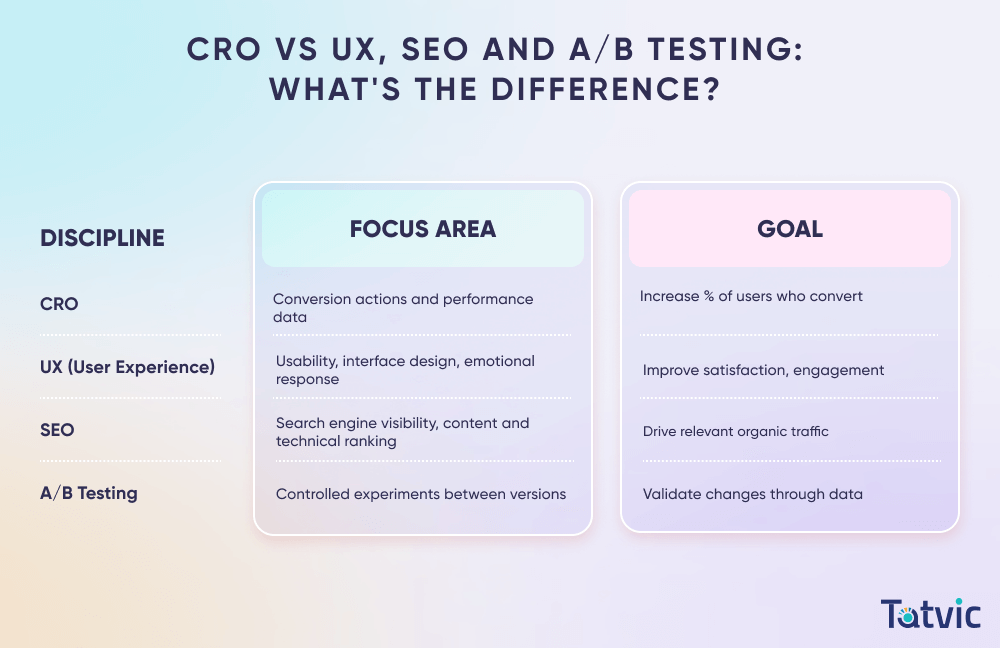
While CRO often overlaps with these disciplines, it uniquely focuses on outcomes, turning intent into action.
For example: SEO gets the user to the page, UX ensures it feels good, but CRO ensures the user actually takes the desired step
How CRO Fits into the 2025 Digital Marketing Funnel
The modern funnel is no longer linear, it’s fluid, multi-device and influenced by dozens of micro-moments.
In this complex journey, CRO acts as the “glue” that:
- Aligns user intent with business goals
- Personalizes the journey in real time using behavioral and contextual signals
- Removes friction across devices and touchpoints
- Ensures every visitor is nudged toward a conversion, regardless of entry point
In 2025, successful brands are integrating CRO across SEO landing pages, paid ad campaigns, email flows and even chatbot conversations, all optimized dynamically through AI and predictive behavior modeling.
CRO is no longer just about tweaking, it’s about transforming how users experience and interact with your brand.
CRO is the conversion engine of modern digital marketing which is deeply data-driven, AI-augmented and essential for growth in a crowded, fast-evolving digital economy.
Why Conversion Rate Optimisation (CRO) is Essential ?
Conversion Rate Optimisation (CRO) is essential in 2025 and beyond because it empowers businesses to maximize value from existing traffic, reduce dependency on rising ad costs, and adapt to fast-changing user behavior.
In a world driven by AI, personalization, and privacy-first marketing, CRO is the key to sustainable, scalable digital growth.
Let’s See Why CRO is Actually Essential in 2025 & Beyond
1. The Impact of Rising Customer Acquisition Costs (CAC)
In 2025, Customer Acquisition Costs (CAC) are at an all-time high—driven by intense ad competition, stricter data privacy laws, and saturated digital channels.
Platforms like Google and Meta have increased CPMs and CPCs, while third-party data targeting has become less effective.
As a result, businesses can no longer afford to rely solely on traffic growth to drive revenue. Instead, maximizing the value of existing traffic through Conversion Rate Optimisation (CRO) has become the most cost-efficient path to growth.
CRO importance in 2025: It’s the difference between scaling profitably or burning budgets.
2. User Impatience and Attention Scarcity
Today’s digital consumers are more distracted, decisive, and demanding than ever. Studies in 2025 show that users decide within 3–5 seconds whether to stay on a page or bounce. Long forms, poor UX, slow-loading pages, or irrelevant messaging now result in instant abandonment.
CRO tackles this head-on by:
-
Streamlining user journeys
-
Reducing cognitive friction
-
Delivering the right message at the right moment
This makes CRO a critical layer of defense against bounce rates and a powerful driver of user satisfaction.
3. Role of AI/ML and Agentic AI in Hyper-Personalization
In 2025, CRO has entered a new era powered by AI, ML and agentic AI frameworks.
Traditional optimization relied on manual A/B testing and generalized hypotheses. But now, AI models can:
- Predict user intent in real-time
- Auto-personalize CTAs, page layouts, and product recommendations
- Adapt conversion paths based on behavioral signals and historical data
Agentic AI takes it further by autonomously testing, learning, and optimizing without human prompt ushering in an age of “self-improving” experiences.
AI in conversion optimization means brands can now deliver 1:1 personalized experiences at scale, improving both conversion rates and customer satisfaction.
4. CRO as a Revenue and Profitability Driver Not Just a Tactic
Gone are the days when CRO was seen as a siloed tactic for the marketing team.
In 2025, top-performing organizations view CRO as:
- A core revenue function
- A strategic enabler of sustainable growth
- A bridge between data, creativity, and business outcomes
Whether it’s improving funnel efficiency, lowering CAC, boosting LTV or increasing repeat purchases, CRO delivers measurable impact on the bottom line.
When aligned with broader business goals, CRO becomes a profit multiplier, not just a series of isolated tests.
In the high-stakes, AI-driven, privacy-aware digital world of 2025, CRO is no longer optional. It’s a mission-critical investment for brands that want to grow smarter, not just harder.
Key Elements of a Conversion Rate Optimisation (CRO) Strategy (2025 Edition)
In 2025, hybrid models are also popular where in-house teams manage execution while agencies provide strategy and experimentation design.
3. Setting Up a Well Defined Conversion Rate Optimisation (CRO) Roadmap
Your CRO roadmap should align with business goals and user behavior insights.
Here’s a proven phased approach:
- Data Audit: Review analytics, heatmaps, funnel leaks, mobile performance
- User Research: Gather qualitative insights (polls, surveys, user testing)
- Hypothesis Building: Use frameworks like PIE or LIFT to prioritize test ideas
- Test Planning: A/B, multivariate, split testing, personalization
- Experimentation: Run, monitor, document outcomes
- Iteration: Scale what works, discard what doesn’t
Document your roadmap in a shared, cross-functional dashboard, visibility is key.
4. Key Metrics to Track for ROI for Conversion Rate Optimisation
To understand the real impact of CRO, focus on more than just lift in conversions.
Key Metrics to Track:
- Primary Metrics: Conversion rate, revenue per visitor, average order value (AOV)
- Secondary Metrics: Bounce rate, time on page, cart abandonment, micro-conversions
- Operational Metrics: Test velocity, win rate, time-to-deploy
- ROI Metrics: Cost per experiment vs revenue gained, lift per channel, CAC reduction
In 2025, CRO is no longer judged on isolated experiments, it’s about business efficiency, user satisfaction, and revenue impact.
Getting started with CRO in 2025 means thinking strategically, not sporadically.
Assess your maturity, build the right team (or partners), align testing to business outcomes, and measure what truly matters.
Whether you’re a growing startup or an enterprise, CRO done right is your most cost-effective growth lever.
Conversion Rate Optimisation (CRO) Tools & Tech Stack in 2025
In 2025, the CRO tech stack is smarter, faster, and more integrated than ever.
Here are the Key Tools Powering Top-performing CRO:
- Optimizely & VWO: Enterprise-grade platforms for A/B, multivariate, and server-side testing.
- Google Optimize Alternatives: GA4 now integrates with platforms like SiteSpect, Convert.com, and Adobe Target post-Google Optimize sunset.
- Hotjar & FullStory: Behavioral analytics for session recordings, heatmaps, and user flows.
- AI-Powered CRO: Tools like Mutiny and Tatvic Agentic CRO Services automate personalization, CTA testing, and real-time journey optimization.
- No-Code/Low-Code Platforms: Unbounce, Webflow, and Visual Website Optimizer enable fast test deployment without dev dependency.
- Data Integrations: Seamless integration with GA4, CDPs, and CRM/marketing automation tools ensures data-driven, omnichannel optimization.
Smart CRO in 2025 is built on data, automation and velocity and your tech stack is the engine behind it.
Top CRO Trends to Watch in 2025–2026
- Agentic AI & Autonomous Testing: AI agents now run tests, adapt layouts, and optimize in real time—zero manual input needed.
- Predictive Personalisation: CRO tools use behavior + intent signals to deliver hyper-targeted experiences before users act.
- Conversion APIs & Privacy-First Testing: With cookies fading, server-side tracking and first-party data are the new CRO foundation.
- Voice & Multimodal CRO: Optimizing for voice search, chat interfaces, and AI assistants is now critical for seamless user journeys.
CRO in 2025–2026 is no longer reactive, it’s predictive, privacy-ready and intelligently automated.
Read In Depth about Latest Conversion Rate Optimization (CRO) Trends to Follow in 2025 & Beyond
Conclusion: CRO Is No Longer Optional, It’s Essential for ROI in 2025
In today’s high-CAC, attention-fragmented digital world, Conversion Rate Optimization (CRO) isn’t just a tactical upgrade—it’s a strategic imperative. Whether you’re scaling a B2B SaaS company, running an ecommerce brand, or managing lead generation funnels, the difference between flat metrics and exponential growth often comes down to how well you optimize for conversions.
With the rise of Agentic AI, hyper-personalization and real-time testing, CRO in 2025 has evolved into a dynamic, data-led discipline that directly impacts revenue, user experience, and long-term profitability.
Talk to Tatvic’s CRO experts and build a custom roadmap to grow your ROI sustainably
Brands Boosted Leads & Sales with Data-Driven Conversion Rate Optimisation (CRO)
CRO isn’t just theory, it delivers measurable results.
Here are real-world examples of how leading brands achieved significant gains in leads, conversions and engagement using advanced Conversion Rate Optimisation (CRO) strategies and technology integration.
Let’s See Few Conversion Rate Optimisation (CRO) Real World Success Stories:
1. ICICI Prudential Life
+22% Sales | +122% Session Duration
By harnessing the power of Google Marketing Platform and custom machine learning models, Tatvic enabled ICICI Prudential Life to dramatically enhance user engagement and conversion paths resulting in a 22% boost in sales and over 2x longer session durations.
Insight: Data-backed personalization and predictive analytics can directly elevate revenue metrics.
2. HDFC Life Insurance
+169% Lead Form Submissions
Tatvic implemented a comprehensive CRO strategy for HDFC Life focused on user journey mapping, intent-driven landing pages, and frictionless UX design. This resulted in a 169% surge in qualified lead submissions—all without increasing ad spend.
Insight: CRO helps extract more value from your existing traffic by eliminating barriers to conversion.
3. UNext Learning
+15% Lead Submissions via Course Pages
For UNext Learning, Tatvic optimized messaging and information hierarchy across their course pages. This clear, benefit-led communication strategy led to a 15% improvement in form submissions from prospective learners.
Insight: Message clarity and page-level UX are critical to motivating user action.
4. Ferns N Petals (FNP)
+13% Mobile Purchase Funnel Completion | +4% Overall Purchases
Tatvic focused on mobile-first CRO for FNP, identifying key friction points in their mobile purchase journey. Streamlining checkout and CTA placements led to a 13% uplift in mobile funnel completions and a 4% increase in total transactions.
Insight: In a mobile-dominated world, mobile-specific optimization can’t be an afterthought.
5. TVS Motor
+31% Lead Generation through Landing Page Optimization
Tatvic transformed TVS Motor’s product landing pages by aligning content with user intent and simplifying the lead capture process. This UX-focused revamp generated a 31% increase in high-quality leads.
Insight: Strong UI/UX synergy can significantly boost lead velocity in high-stakes industries.
6. Royal Enfield
+93% Higher Conversion Rate on Desktop | 44% Higher Conversion Rate on Mobile
By redesigning the ‘Book a Test Ride’ form with better CTA placement, reduced fields, and mobile responsiveness, Tatvic helped Royal Enfield achieve a 50% improvement in conversion rate on this key performance metric.
Insight: Even minor UI changes when based on behavioral data can unlock massive ROI.
These results underline a core principle: CRO is not just about testing, it’s about strategic transformation backed by data, psychology, and continuous iteration. When done right, it turns traffic into business outcomes.


